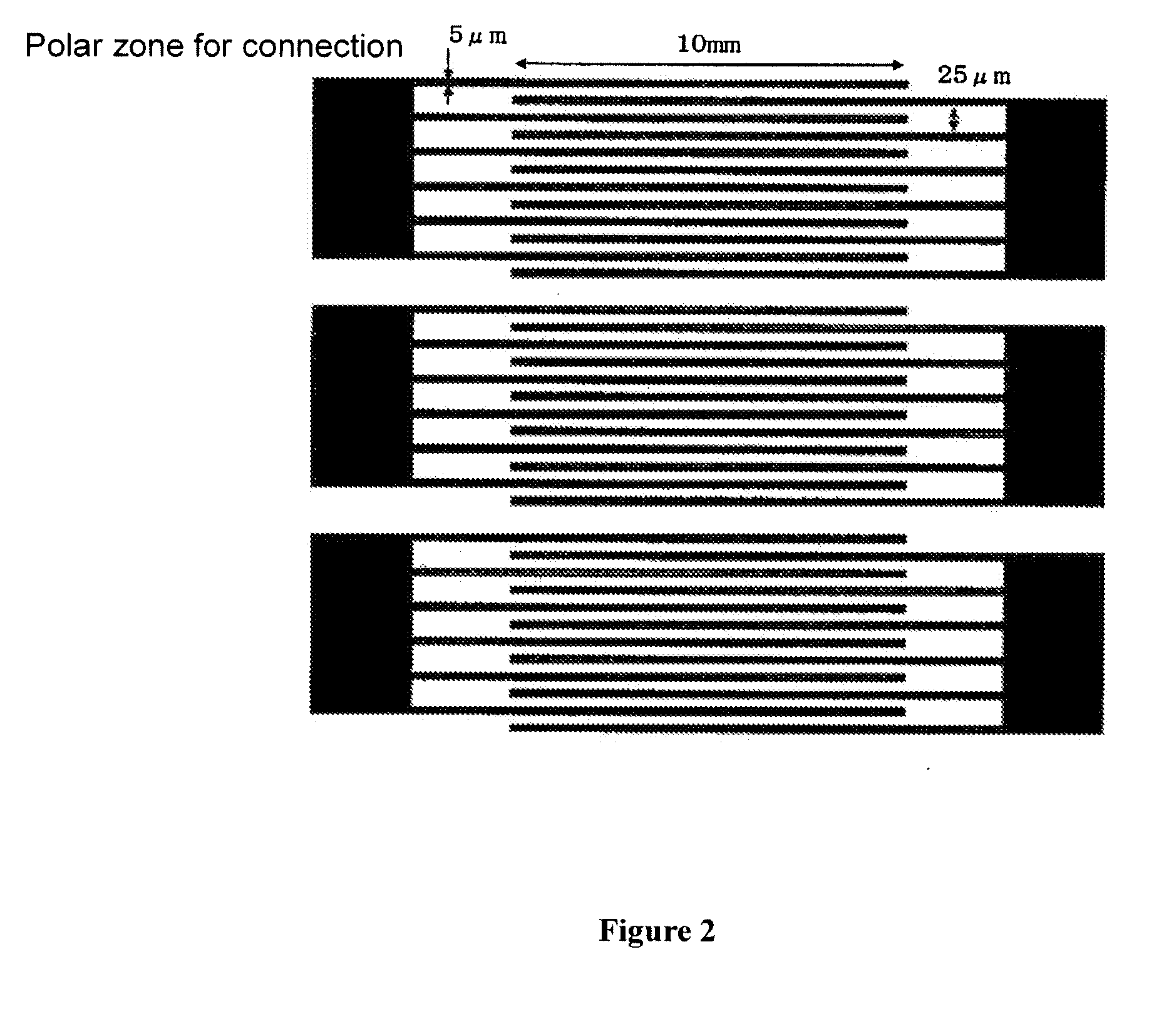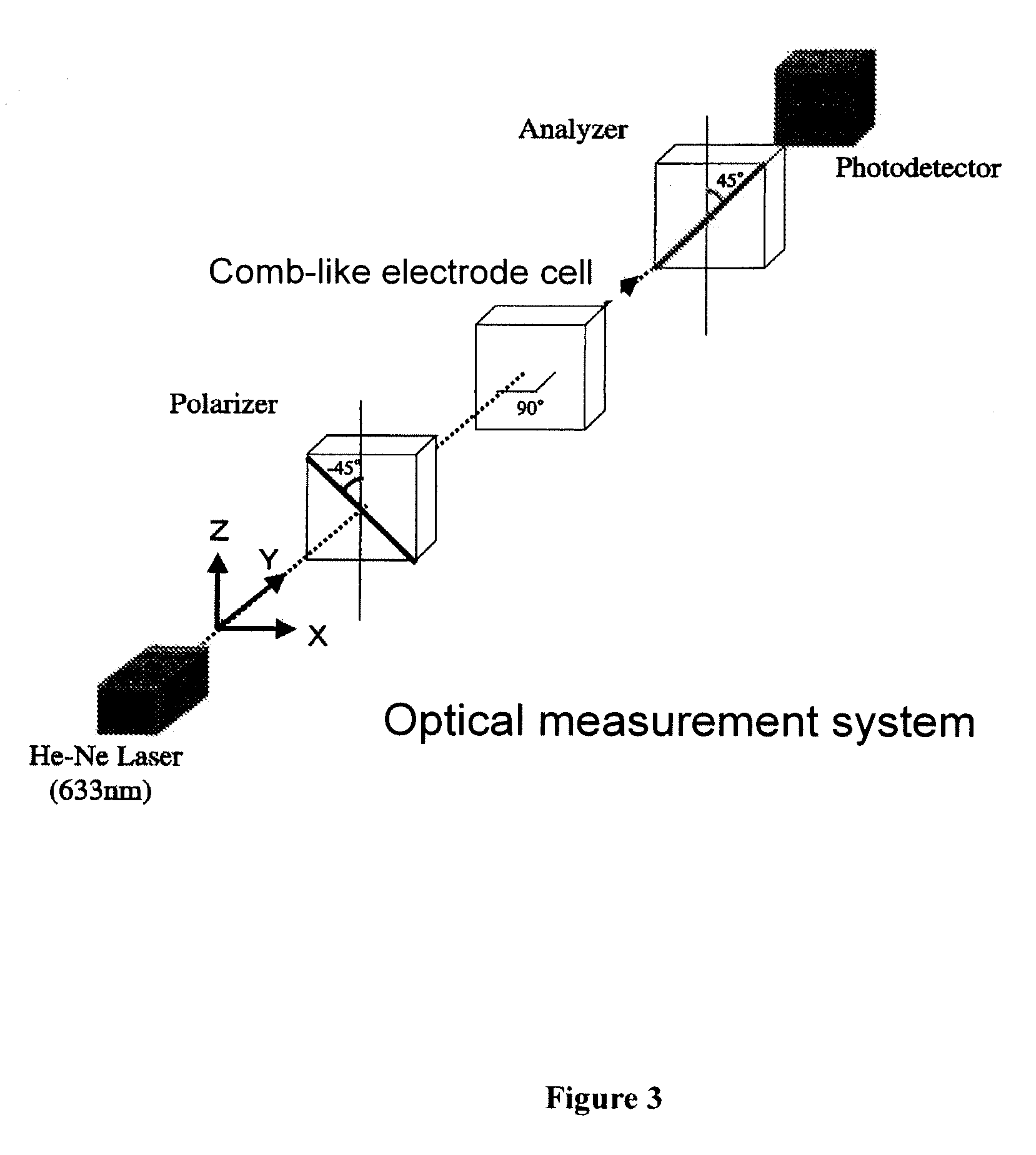Polymer/liquid crystal composite and liquid crystal element
- Summary
- Abstract
- Description
- Claims
- Application Information
AI Technical Summary
Benefits of technology
Problems solved by technology
Method used
Image
Examples
example 1
[0272]Preparation of Liquid Crystal Composition
[0273]A nematic liquid crystal composition A-1 was prepared by mixing compounds represented by the following formulae (a) to (f) and (g) in the weight ratio shown below. Specifically, the composition was prepared by mixing: compounds (a) and (b) having the clearing point (N-I point) of 250° C. or more, as compounds corresponding to the component 1 represented by the above-described formula (1); compound (g) having the K-I point of 49.8° C. and the clearing point of 7.7° C., as a compound corresponding to the component 2 represented by the above-described formula (3); and compounds (c) to (f). Values shown at the right side of values of the weight ratio are phase transition temperatures of respective compounds. The clearing point of the compound (g) was 7.7° C. The clearing point of the composition was given as an extrapolation value of N-I point, which was measured after mixing 15 wt % of compound (g) with the mother liquid crystal ZLI-...
example 2
[0289]A cell in which the polymer / liquid crystal composite A-5P obtained in Example 1 was held was set the optical system shown in FIG. 3 to measure electrooptic characteristics. The aforementioned cell was set in the optical system so that the incidence angle of laser light was perpendicular to the cell surface and the line direction of the comb-like electrode was 45° with respect to polarization plates of Polarizer and Analyzer, respectively. When a rectangular wave having the amplitude of 180 V was applied, the transmission rate was 88% at a measurement temperature of 20° C., and the transmitted light intensity was saturated. When detected using a photodetector, the transmitted light intensity at the time when no electric field was applied was 0.08, and the transmitted light intensity at the time when electric field was applied was 252. When the contrast was calculated, it was 3150. The response speed during rise time (time required for change of transmitted light intensity from ...
example 3
[0292]Preparation of Liquid Crystal Composition
[0293]A nematic liquid crystal composition F-1 was prepared by mixing compounds represented by the following formulae (o-1), (o-2), (o-3) and (p) in the weight ratio described below. Specifically, the composition was prepared by mixing: compounds (o-1) to (o-3) having the N-I point (clearing point) of 250° C. or higher, as compounds corresponding to the component 1 represented by the above-described formula (1); and compound (p) having the K-I point of 21.4° C. and the clearing point (extrapolation value) of −41.6° C., as a compound corresponding to the component 2 represented by the above-described formula (3). Values shown at the right side of values of the weight ratio are phase transition temperatures of respective compounds.
(o-1)16.6%K 102.9 N 258.7 I(o-2)16.7%K 98.4 N 255.2 I(o-3)16.7%K 87.8 N 251.5 I(p)50.0%K 21.4 I
[0294]Next, a chiral dopant ISO-6OBA2 was added to the liquid crystal composition F-1 to obtain liquid crystal compo...
PUM
 Login to View More
Login to View More Abstract
Description
Claims
Application Information
 Login to View More
Login to View More - R&D
- Intellectual Property
- Life Sciences
- Materials
- Tech Scout
- Unparalleled Data Quality
- Higher Quality Content
- 60% Fewer Hallucinations
Browse by: Latest US Patents, China's latest patents, Technical Efficacy Thesaurus, Application Domain, Technology Topic, Popular Technical Reports.
© 2025 PatSnap. All rights reserved.Legal|Privacy policy|Modern Slavery Act Transparency Statement|Sitemap|About US| Contact US: help@patsnap.com



